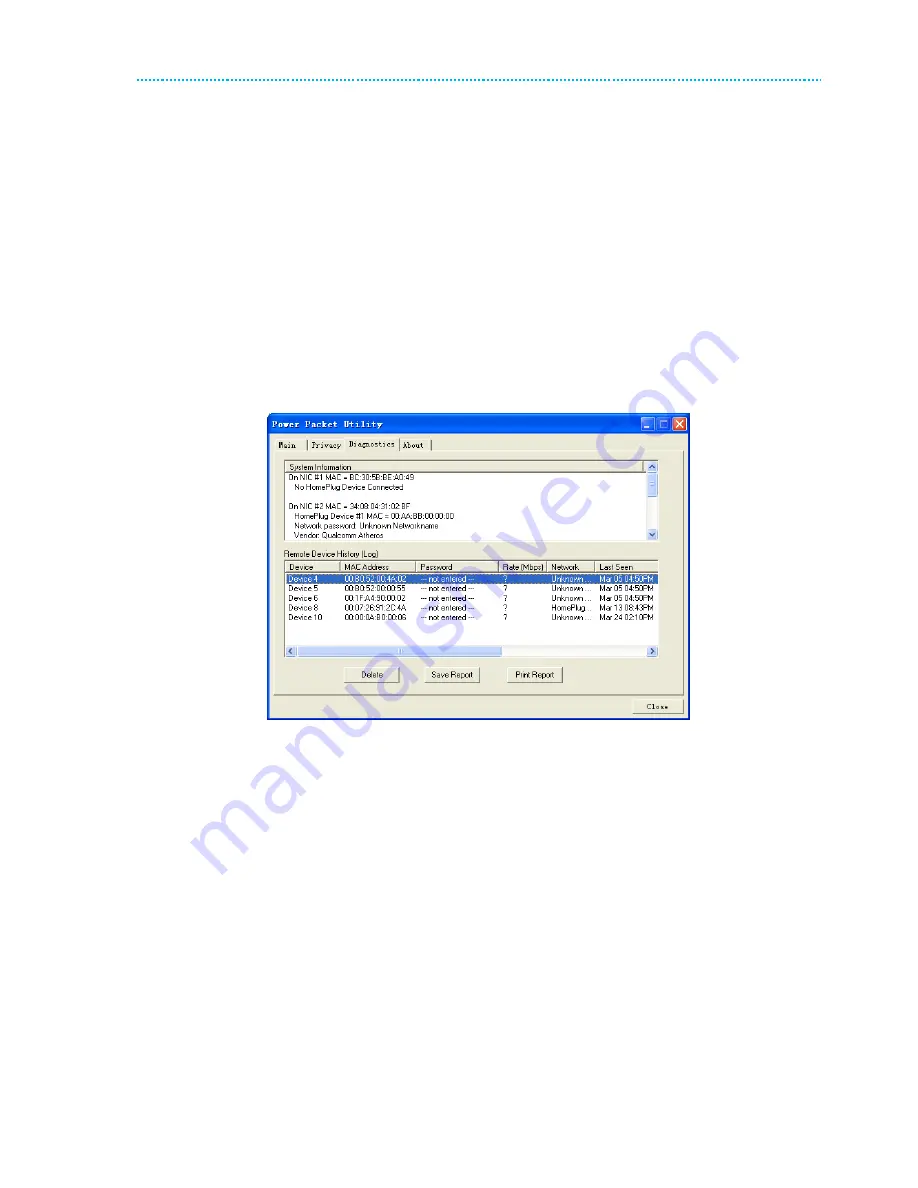
15/24
15
5.3
Diagnostics Tab
The
Diagnostics
screen shows the system information and history of all remote devices appeared over a period of
time. See
Figure 13
.
The
Upper panel
shows technical data concerning software and hardware on the host computer that are used to
communicate through HomePlug on the powerline network. It includes the following:
Operating system platform/version
Host network name
User name
MAC address of all NICs (Network interface card) connected to the host
Identify versions of all driver DLLs and libraries used (NDIS) and optionally
HomePlug chipset manufacturer name (Turbo Only devices)
MAC firmware version (Turbo Only devices)
MAC addresses of all devices connected locally to the host
Version of the configuration utility
Vendor name
Figure 14 Diagnostics tab
The
Lower panel
displays the history of all remote devices appeared on the computer over a certain period of time. All
the devices and the parameters of the devices on the powerline network are listed. Devices that are active on the
current logical network show a transfer rate in the rate column. Devices on other networks, or devices that no longer
exist are shown with a “?” in the rate column. The following remote device information is available from the
diagnostics screen:
Device alias name
MAC address
Password
Device last known rate
Device last known network name
HomePlug chipset manufacturer name
Date device last seen on the network
MAC firmware version
The diagnostics information displayed can be saved to a text file for later use, or be printed for reference for a
technical support call. Click
Delete
to delete the devices which are no longer part of the network. A dialog window
pops up with a confirmation message if the user wants to delete a device whose password has been entered.
Summary of Contents for PLC500M
Page 4: ......
Page 11: ...11 24 11 Figure 8 Completing the installation R 6 Click Close to finish the installation ...
Page 23: ......










































